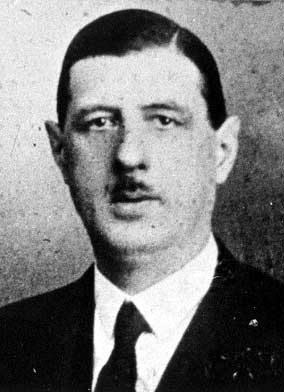
You can't miss the set of giant elephant tusks against a wall. The house is a snapshot in time: once Yvonne left the house in 1978 (she died a year later), nothing was ever touched again, or hardly. Be forewarned: no photos are allowed inside, so the few below have come from the official sources.

Looking around the house, you may begin to believe you have an insight into this giant man's personality (he was 1m 96, or 6'4" tall, often nicknamed The Great Asparagus). This is the home of a writer and thinker, not of a soldier – there is a distinct absence of anything military. This is where he wrote his books, elaborated his theories, and renewed his energies.
CHARL DE GAULLE PROFESSIONAL
La Boisserie was De Gaulle’s refuge, the one place he could let his guard down and show the emotions he hid in his professional life (some less kind souls would claim he had no emotions to hide). An aide-de-camp would answer if it rang or would handle outgoing calls, with De Gaulle appearing only at the last minute. The lack of conveniences at home was almost unheard of for a man of his stature.įor example, he rarely used the telephone, which he despised, and when he finally gave in and had it installed, he hid it in a cupboard under the stairs. General Charles de Gaulle, from London, 18 June 1940 'Whatever happens, the flame of the French Resistance must not be extinguished, and will not be extinguished." (Quoi qu'il arrive, la Flamme de la résistance française ne doit pas s'éteindre et ne s'éteindra pas.) In De Gaulle's case, the owner died after just two years, handing him the financial bonanza of a lifetime. If the owner lives to ripe old age, the buyer may pay well over the market price for a home. The 14-room house was initially built in the early 19th century and was used for years as the local pub, which in French is called a brasserie, probably accounting for its present name, La Boisserie.ĭe Gaulle was still a colonel with a modest salary when he bought the house in 1934, so he and his wife Yvonne used a typically French system called viager, whereby the buyer pays rent throughout the seller's lifetime.
CHARL DE GAULLE WINDOWS
In late summer, La Boisserie looks like a typical gentilhommière, the name given to manor houses belonging to gentlemen of noble birth, with vines creeping towards the windows and embraced by a well-manicured garden. Buy from Amazon La Boisserie, home of Charles de Gaulle An absolute must-read if this period in history speaks to you. The author, Julian Jackson, vividly unwraps the major events in which De Gaulle played a pivotal role – the Algerian War, the creation of the Fifth Republic, and the revival of France as a global power. A Certain Idea of France is a thorough biography of De Gaulle and his time, tracing his path from barely known military officer to leader of France. I've read this book once right through and I will read it again - and refer to it often. He will forever be remembered for his radio call for resistance on 18 June 1940, an address deemed so unimportant at the time the BBC didn't bother to record it.
CHARL DE GAULLE FREE
From London, he led the Free French forces and became their voice on BBC Radio. Unable to stomach the Vichy regime's appeasement of Nazi Germany in World War II, he fled to Britain.


At school, if there was a play with a regal role, he would always be the King of France.įirst educated by the Jesuits, he would become a career military man and fight in World War I. Rest assured, I’m not about to drag you through decades of 20th-century history or politics, but I do have to refresh your memory about De Gaulle’s life, without which a visit to Colombey would make very little sense.īorn in northern France, De Gaulle grew up feeling his destiny would be historic, and everything he did was designed to make that destiny come true. He would live here intermittently throughout his life, more like a private citizen than the head of state he would become, taking part in village life, writing his memoirs, and spending his time exploring the nearby hills and forests. La Boisserie, his home, was so modest it had no running water when De Gaulle first bought it in 1934. His was a compact country house on the edge of a tiny village of the Haute Marne département, called Colombey-les-Deux-Eglises. In contrast to their grandiosity and opulence, De Gaulle lived in comparative modesty.


 0 kommentar(er)
0 kommentar(er)
